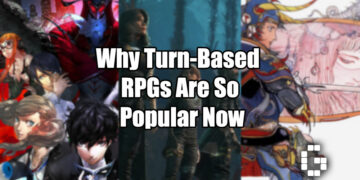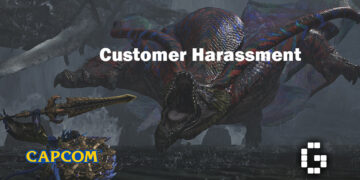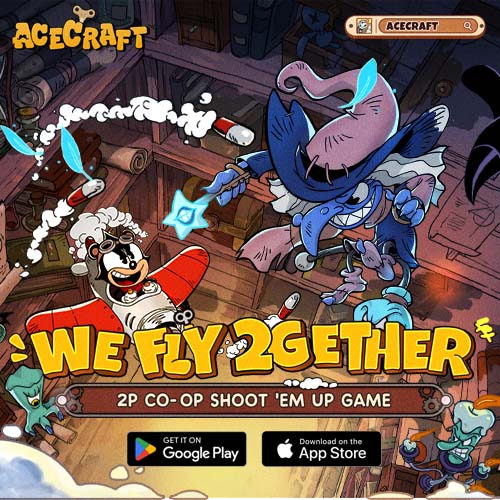Now, I certainly do like my share of anime men. Twisted Wonderland launched just a couple days ago, featuring character designs by Yana Toboso whose most familiar work is probably Black Butler for most. Here, the pretty anime boys take their inspiration from iconic Disney villains from over the years, bearing their various tropes for you to enjoy.
Not all of them have cards at launch, which seems a bit unusual, if just a little justified in the main story. Quite a few of my peers were rather disappointed at a lack of Malleus to start with. Otherwise, you get to pick a boy for a starter SR, before you dive right in.
You are a human who seems to have entered Night Raven College entirely by accident. Nevertheless, you are stuck here amongst the throng of handsome and pretty men in this all-male school, so what shenanigans will be unfolding?

There’s a wide array of boys that you can choose to like, so there should be a trope for everyone, depending on personal taste. They’re all mostly lithe though, so if you were looking for a bit more beef, then you might be disappointed at the variety.
The menus all have this light gilding, and it’s all suitably dark and gloomy to match the whole “villains” theme, where they’re posh, beautiful, and probably dangerous. While the game is primarily in Japanese, locations and chapter names are in English, perhaps for that touch of class.
The main story is fully voiced, featuring the use of Live2D. Maybe it’s just me, but the sprite movements seem a bit more subtle. In the rhythm and battle sequences, the sprites become the more regular chibi artwork. When you obtain new cards, you’ll get a short voiced snippet from them, with SSR characters getting an additional voice line before you see the card. The available selection are all gorgeous, so really, plenty of eye candy is available here.

Incidentally, non-main story areas where mini events may pop up, are not voiced. Your homescreen boy is voiced, animated with Live2D. You can find the summoning screen, and various voicelines in the Album area, so don’t worry if you missed out getting your boy’s lines.
I couldn’t find the options myself, but it may be distracting for some that during the rhythm game parts, the background may be scrolling and there can be moving parts that could take your attention away from the notes themselves. Perhaps this is why there aren’t more complicated gestures, at least, in the beginning.
Controls are very easy. Pretty much everything is controlled by a series of taps. Auto unlocks relatively early, or late, depending on whether you skip through the prologue. You need to clear up to Prologue 7 to get to the gacha. At some rhythm portions, you’ll need to tap both sides of the screen, but otherwise, there isn’t anything particularly complicated.

Besides the usual levelling your cards, you can send your characters to lessons to raise their skills. Card and skill levels seem to weigh more on the battle portions of the game, as even with level 1 cards, I still got a high score rank on the rhythm parts. The rhythm parts are the only ones you can’t auto, understandably.
There’s energy overflow, which is absolutely great because you start out with a whopping 10! total energy with which to conduct lessons. In battle, there are three primary elements, and one neutral. Advantageous or disadvantageous attacks are marked with arrows, red for the former and blue for the latter. You take at least two actions during your turn. The attacks come out as a small hand of cards at the bottom of the screen, marked with element and the character doing the attack.

For those of you in for the pretty boys, rejoice, for there is an in-built reroll function! However, if you wish to stick to the game, it’s 300 diamonds for a 10-pull, with an incredibly low SSR rate of 1.5% – by today’s standards. Any duplicates automatically limit break the relevant card, up to 4 times.
Overall, it’s a pretty simple game to pick up, if you just want to admire the cute boys. There is a certain depth to the battle parts, with cards bringing their own skills, for something to look into. The rhythm part can be surprisingly challenging if you’re not used to it, even with just a single node. I’d be curious to see if it gets localized to English soon, to appeal to a wider market. Give it a try, at least for some pleasing aesthetics.


![[EXCLUSIVE] The Rise of a Champion: Yu-Gi-Oh! World Championship 2025 TCG Champion Julien Kehon Speaks Out](https://cdn.gamerbraves.com/2025/09/YuGiOh-TCG-Winner_Interview_FI-360x180.jpg)

![[GUIDE] Dream and Lethe Record Tier List](https://cdn.gamerbraves.com/2025/09/Dream-and-Lethe-Record-Tier-List_Guide_FI-360x180.jpg)
![[EXCLUSIVE] Behind the Victories: Insights from Yu-Gi-Oh! DUEL LINKS WCS 2025 Champions](https://cdn.gamerbraves.com/2025/08/YuGiOh-Duel-Links-WCS-2025_News_FI-360x180.jpg)
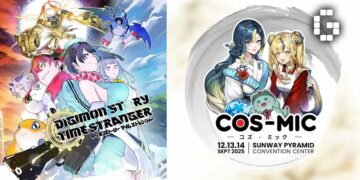



![[EXCLUSIVE] Ink, Identity, and Choice: The Story Behind Realm of Ink](https://cdn.gamerbraves.com/2025/08/Realm-of-Ink-gamescom-2025_Interview_FI-360x180.jpg)
![[EXCLUSIVE] The Story Behind ROG’s Team Up with Xbox for the ROG Xbox Ally at gamescom 2025](https://cdn.gamerbraves.com/2025/08/ROG-Xbox-Ally-Interview_Interview_Galip-solo-2-360x180.jpg)
![[EXCLUSIVE] gamescom asia Project Director Daria La Valle Explains the Historic Move to Thailand](https://cdn.gamerbraves.com/2025/08/gamescom-2025-Asia_Interview_FI-360x180.jpg)
![[EXCLUSIVE] Where Winds Meet Dev Team Talks Building a Living Wuxia World at gamescom 2025](https://cdn.gamerbraves.com/2025/08/Where-Winds-Meet-Interview_Interview_Eric-Zheng-solo-360x180.jpg)
![[EXCLUSIVE] Inside Sonic Racing: CrossWorlds with the Development Team During gamescom 2025](https://cdn.gamerbraves.com/2025/08/Sonic-Racing-gamescom-2025_Interview_FI-360x180.jpg)
![[BIC2025] Exclusive Interview with 1001 Nights Lead Programmer on AI Storytelling in the Game](https://cdn.gamerbraves.com/2025/08/1001-Nights-Interview_Interview_FI-2-360x180.jpg)
![[EXCLUSIVE] inZOI Studio CEO Hyungjun Kim Talks AI Innovation and Community-Driven Design at gamescom 2025](https://cdn.gamerbraves.com/2025/08/inZOI-gamescom-2025_Interview_FI-360x180.jpg)


![[EXCLUSIVE] The Rise of a Champion: Yu-Gi-Oh! World Championship 2025 TCG Champion Julien Kehon Speaks Out](https://cdn.gamerbraves.com/2025/09/YuGiOh-TCG-Winner_Interview_FI-350x250.jpg)


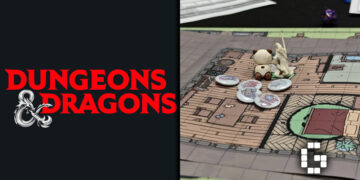

![[GIVEAWAY] SHINOBI: Art of Vengeance Delivers the Deep Combat Modern Action Gamers Want](https://cdn.gamerbraves.com/2025/08/Shinobi_Feature_FI-360x180.jpg)
